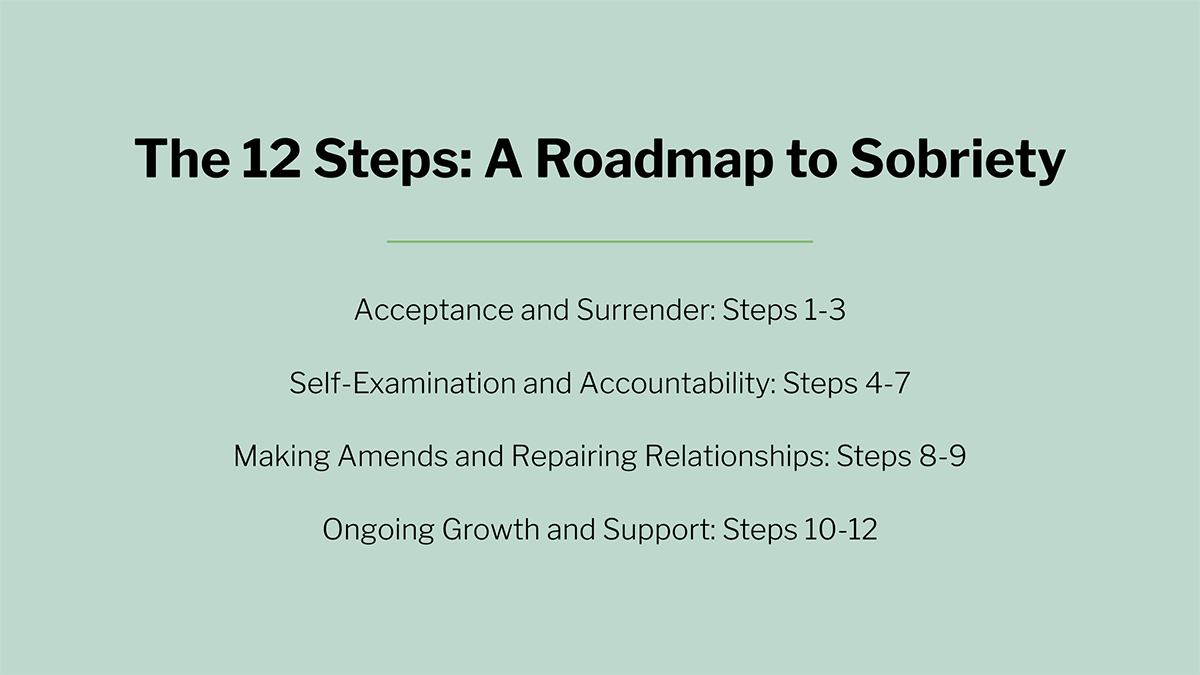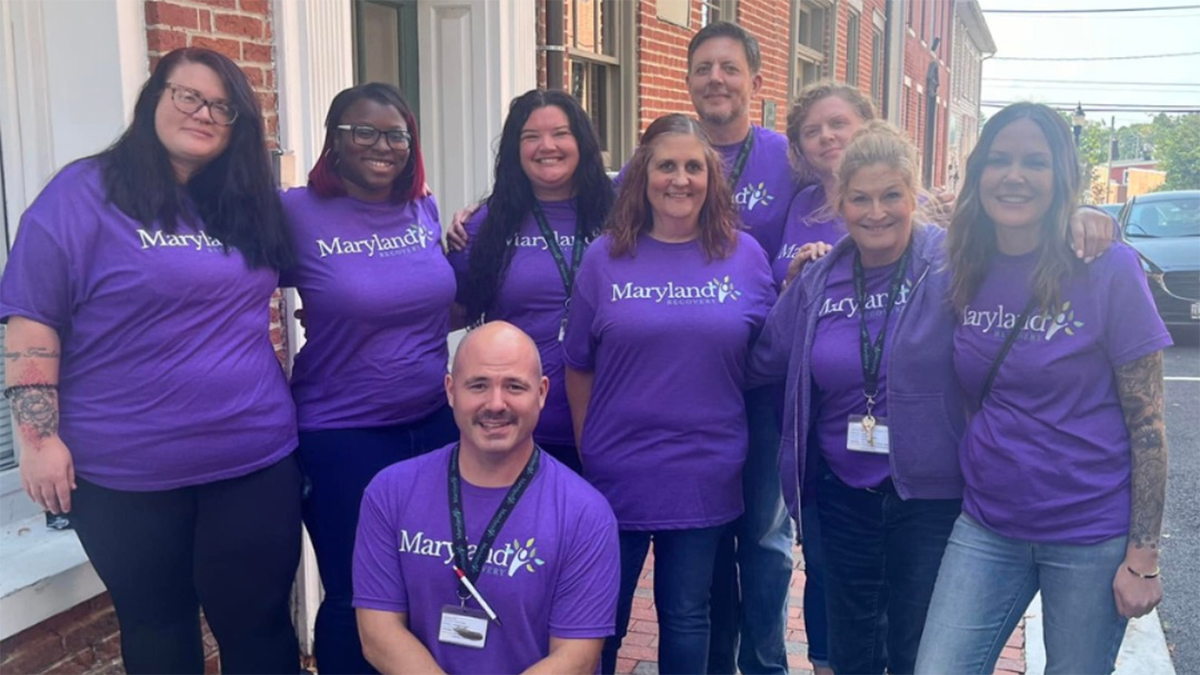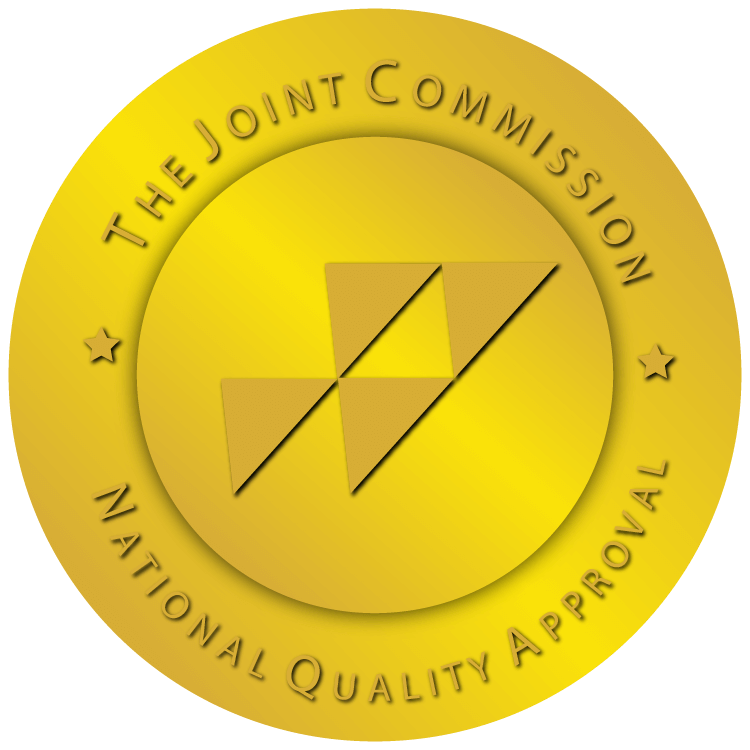
12-step programs have been around for nearly 100 years. In that time, they have likely helped millions of individuals on their journeys to recovery. While Alcoholics Anonymous (AA) is the best known of these, all 12-step programs provide a series of steps designed to help individuals overcome substance use disorder and develop long-term coping skills through focused, strategic actions.
What Is a 12-Step Program?
12-step programs were introduced in the mid-1930s by Bill Wilson and Dr. Bob Smith, who were the co-founders of Alcoholics Anonymous. Unlike other methods, which viewed substance use disorders as diseases that could be cured, Wilson and Smith suggested that people who experience substance use disorders continued to struggle with urges to use their substance of choice, even when in recovery.
AA and other 12-step programs posit that, with the right mindset and proper support, individuals engaging in 12-step programs can empower themselves to not only cease substance use but also engage in their lives again. The structured approach within a 12-step program is guided by principles such as spiritual growth, behavioral change, and personal accountability. All of these elements work together to give struggling individuals the motivation, hope, and determination to reduce the compulsion to use substances and maintain recovery.
Spiritual Growth
The spiritual aspect of the 12-step program encourages individuals to explore their beliefs and find a source of strength beyond themselves. This is typically referred to as a “Higher Power.” Instead of any one religious figure, however, the term “Higher Power” is left intentionally broad to facilitate each individual’s interpretation, whether that power is a deity, religious icon, element of nature, or even their own support structure..
12-step programs like AA also focus on spiritual principles, including honesty, hope, surrender, faith, courage, integrity, willingness, humility, love, self-discipline, and service. While everyone in a program may identify more strongly with different aspects, the spiritual principles of the program provide integral support from within.
Behavioral Change
12-step programs also guide individuals toward the positive behavioral changes necessary for recovery. They focus on making choices that support a healthy lifestyle, which includes examining past mistakes and harms caused, admitting wrongdoings, making amends, practicing self-correction, promoting ongoing growth, adopting healthy behaviors, attending meetings, and seeking a sponsor.
Personal Accountability
Personal accountability is interwoven throughout the fabric of a 12-step program. This aspect emphasizes an individual’s responsibility for their recovery journey. In a 12-step program, accountability includes taking ownership, being honest with oneself, setting goals, making commitments, accepting consequences, seeking support, making a continuous effort, and working to prevent relapse.
The 12 Steps: A Roadmap to Sobriety

The 12-step process provides a structured path for recovery for any individual struggling with substance use disorder. For AA, the steps are outlined in “Alcoholics Anonymous: The Story of How Many Thousands of Men and Women Have Recovered from Alcoholism,” also called the “Big Book.”
Acceptance and Surrender: Steps 1-3
The initial steps of a 12-step program focus on acknowledging the problem and beginning to relinquish control.
This phase emphasizes the importance of accepting your own limitations and seeking help from a higher power or other support system.
- Step 1: You must first acknowledge that you are powerless over alcohol. Once you realize you are not in control and your life has become unmanageable, it is possible to see that this is not a sign of weakness, but rather one of courageous acceptance.
- Step 2: Next, you must come to recognize that a higher power can restore your sanity. This step can be deeply personal and provides space for individuals to define this power in any way that resonates with their own belief system. From friends and family to religious ideals, finding your higher power and identifying how it can comfort and guide you is vital.
- Step 3: It is crucial to make the decision to turn your will and your life over to the care of God. This act of faith opens the door to guidance and support beyond an individual’s own limited resources. As with Step 2, it is essential to note that not everyone shares the same belief system, this step is more about letting go and accepting that you are not in full control.
Self-Examination and Accountability: Steps 4-7
After you have acknowledged the problem and embraced the possibility of recovery with help from a higher power, the next steps dive deep into an honest self-assessment.
This requires you to critically examine behaviors, motivations, and actions as well as their impact on yourself and those around you.
- Step 4: Begin by making a searching and fearless moral inventory of yourself. This involves taking a comprehensive look at past actions, identifying patterns of behavior, and acknowledging your strengths as well as your shortcomings.
- Step 5: Next, admit to a higher power, yourself, or another human being the exact nature of your wrongs. This act of confession helps you to release the burden of guilt while fostering accountability.
- Step 6: Let go and be entirely ready to have life remove all these defects of character. This is a step of willingness and openness to change.
- Step 7: Humbly ask the higher powers to remove your shortcomings. This is an acknowledgment of the need for help and also helps you eliminate negative patterns.
Making Amends and Repairing Relationships: Steps 8-9
After you have a clearer understanding of past wrongdoing and the harm it caused, the focus can then shift to repairing relationships and making amends.
At this point, you can acknowledge the impact of your past actions, offer genuine apologies, and work on rebuilding trust with your loved ones.
- Step 8: Create a list of anyone you have harmed, regardless of how intensely, and become willing to make amends to them all. This step requires courage and a genuine desire to right past wrongs.
- Step 9: If you are able, attempt to make direct amends with those you have hurt, except when doing so would injure them or others. An individual must take concrete actions to repair the damage caused by their past behaviors, while also acknowledging that not every relationship can be repaired.
Ongoing Growth and Support: Steps 10-12
Recovery is a journey, not a destination, and thus it is never complete. It is an ongoing process of growth and maintenance that requires continuous self-reflection, commitment, and effort.
Individuals will need to adapt to new challenges, continue to reinforce positive behaviors, and persist in working towards a healthier, more balanced life.
- Step 10: Continue to create your personal inventory, and when you are wrong, do not be afraid to admit it. This fosters ongoing accountability and helps to prevent the accumulation of new harmful behaviors.
- Step 11: Practice meditation to deepen your conscious connection with yourself and your higher power. Spiritual and mindful practices are important while staying on the journey of recovery.
- Step 12: Having had a spiritual awakening as the result of these steps, make efforts to share these practices and principles with others whom you see struggling. In addition, continue to work to integrate them into your daily life.
How a 12-Step Program Can Help Individuals Recover
By providing a clear pathway for self-examination, accountability, and connection with others facing similar challenges, 12-step programs empower individuals to confront their substance use, develop crucial coping mechanisms, and ultimately build a life free from the hold of drugs and alcohol. This holistic approach extends beyond simply ceasing substance use and fosters personal growth and sustainable living.
Supporting Lifestyle Changes
Since substance use can impact physical well-being, emotional health, and sense of self, recovery demands more than just ending substance use or complying with a court order. It calls for an ongoing lifestyle transformation that will be a lifetime journey.
Developing New Skills
Individuals participating in 12-step programs work on developing new skills and tools that can be applied to other areas of their lives, including avoiding triggers, setting goals, self-monitoring, and other effective coping strategies. This will equip program participants with a comprehensive skill set for sustaining sobriety and continual growth.
Getting the Support of Other Members
Being part of and participating in meetings provides an opportunity to connect with others who are going through similar experiences. When someone is struggling with substance use and feels alone, finding common ground with peers can make it easier to seek and receive support. Group activities can also help individuals develop new interests and promote a sense of accomplishment.
Provides a Non-Judgmental Atmosphere
Individuals living with substance use disorders often face criticism from their loved ones. This can lead to a habit of suppressing emotions and keeping true feelings hidden away. However, walking into a 12-step meeting offers a different experience – one of warmth and acceptance. Newcomers who share their stories find understanding rather than judgment due to the meeting space being a “been there, heard that” environment.
Scientific Studies Find That It Helps
There are multiple scientific studies, including a review of a substantial body of research – a Stanford systematic review – that offer compelling evidence for the effectiveness of 12-step programs.
The Stanford review provided a meta-analysis of an earlier Cochrane review of over 10,000 participants across 27 studies. The initial review found that treatment coupled with AA or another 12-step program led to significantly higher rates of continuous abstinence from substance use compared to other treatments like cognitive-behavioral therapy. This finding was consistent across multiple follow-up periods of the study, at 12, 24, and 36 months.
The Stanford review concluded that individuals who participated in a 12-step program were 20-60% more likely to maintain abstinence than those receiving alternative interventions or no treatment at all. (Kelly, et al., 2020)
12-Step Programs as a Code of Behavior

12-step programs provide a set of rules that help individuals recovering from substance use act and think in healthier ways. Instead of engaging in problematic behaviors, a program can help them learn new ways to live their lives while dealing with these challenges. It’s not just about stopping a bad habit, but about transforming your life.
Essential aspects of 12-step programs include being humble, helping others, and understanding yourself better. Being humble means realizing that you can’t solve your problem alone and that you are willing to seek help. Helping others, such as sharing your story or supporting someone else in the program, makes you feel connected and gives you a sense of purpose. Additionally, the program encourages you to gain a deeper understanding of yourself by examining your actions closely and reflecting on the reasons behind certain choices.
A significant part of recovery is reflecting on past mistakes and attempting to rectify them. This is often referred to as creating a moral inventory and making amends. When you honestly examine your past actions from a different perspective, you begin to understand how they have affected others and why you need to change. Working to rectify past mistakes can help you heal and also teach you to be a better person in the future.
Who Benefits From the 12 Steps?
While most people associate 12-step programs with alcohol recovery, they can also help individuals grappling with substance use disorders that involve drugs. The core principles of AA are also present in NA (Narcotics Anonymous), including self-reflection, acceptance, making amends, and spiritual growth. These principles transcend specific substances and can provide a universal pathway toward healing and lasting change.
It is important to mention that 12-step programs are for people at any stage of recovery. Newcomers can find a structured path to navigate recovery, while those who are experiencing a relapse can rediscover hope and a renewed commitment. Even individuals who have remained in recovery for years can utilize the steps for ongoing personal growth and to support others in their journey.
12-step programs’ adaptability and accessibility enable individuals to engage in a manner that best suits their needs, fostering a stronger sense of connection and promoting sustained recovery.
12-Step Support at Maryland Recovery

Maryland Recovery supports clients in connecting with local 12-step fellowships, though it is not a requirement. We recognize the diverse needs of those we serve and craft individualized treatment plans to facilitate recovery. For patients where a 12-step approach is not the optimal path, we offer guidance while exploring comparable options. Our clinical team regularly holds group meetings to explore the differences across several 12-step alternatives.
Bel Air, Maryland, and the wider Harford County community embrace individuals as they travel their recovery journeys.
As a result, beyond the numerous 12-step-based recovery meetings in the area, there are several non-12-step group options as well, including:
To help our clients make informed decisions about the options they include in their care, Maryland Recovery provides clear information and comprehensive education. We take time to explore the differences between these groups, while supporting each individual in moving forward with their chosen path or organization. This support extends throughout the recovery journey, as clients have ample time to attend 12-step or similar meetings each week thanks to our recovery home-outpatient format.
12-step meetings (or their equivalent) are just one component of the overall treatment process at Maryland Recovery. We offer individual and group counseling sessions, in addition to holistic activities, to create a comprehensive and personalized approach to addiction treatment that provides a higher chance of long-term recovery. Reach out to us today for more information or to begin your personal journey.
*This article is a combination of previously published articles and has been updated May 27, 2025.
Sources:
- Recovery Research Institute. (2020, June 25). Why does it work? Perspectives on change in 12-step & non-12-step mutual-help groups. https://www.recoveryanswers.org/research-post/why-does-it-work-perspectives-change-12-step-non-12-step-mutual-help-groups/
- Stanford Medicine. (2020, March 11). Alcoholics Anonymous most effective path to alcohol abstinence, Stanford researcher says. https://med.stanford.edu/news/all-news/2020/03/alcoholics-anonymous-most-effective-path-to-alcohol-abstinence.html
- Kelly, J. F., Humphreys, K., & Ferri, M. (2020). Alcoholics Anonymous and other 12‐step programs for alcohol use disorder. Cochrane Database of Systematic Reviews, (3), CD012880. https://doi.org/10.1002/14651858.CD012880.pub2
- Kelly, J. F., & White, W. L. (2020). Recovery groups. Alcohol Research: Current Reviews, 40(3), 1–9. https://pubmed.ncbi.nlm.nih.gov/32628263/

A solution focused therapist with over a decade in the helping services, I am attuned to the broad expanse of holistic recovery. My mission is inspired by the work of Joseph Campbell, Dr. Wayne Dyer, and Fr. Joseph Martin. I am well versed in the specific needs of the recovery community and am trained in EMDR.








